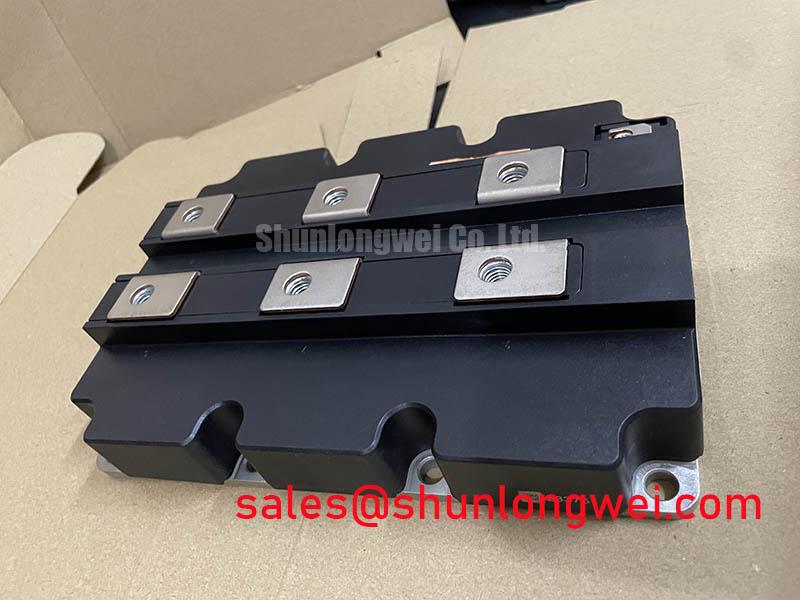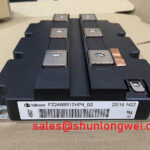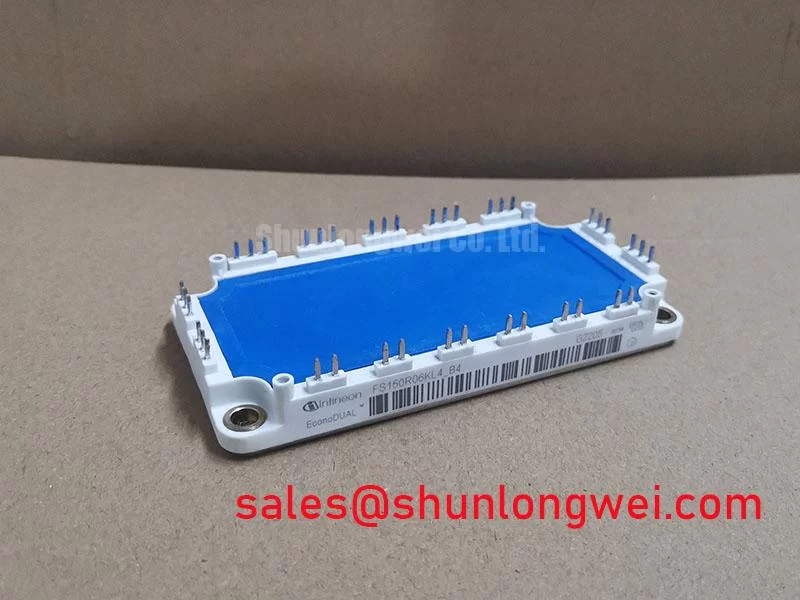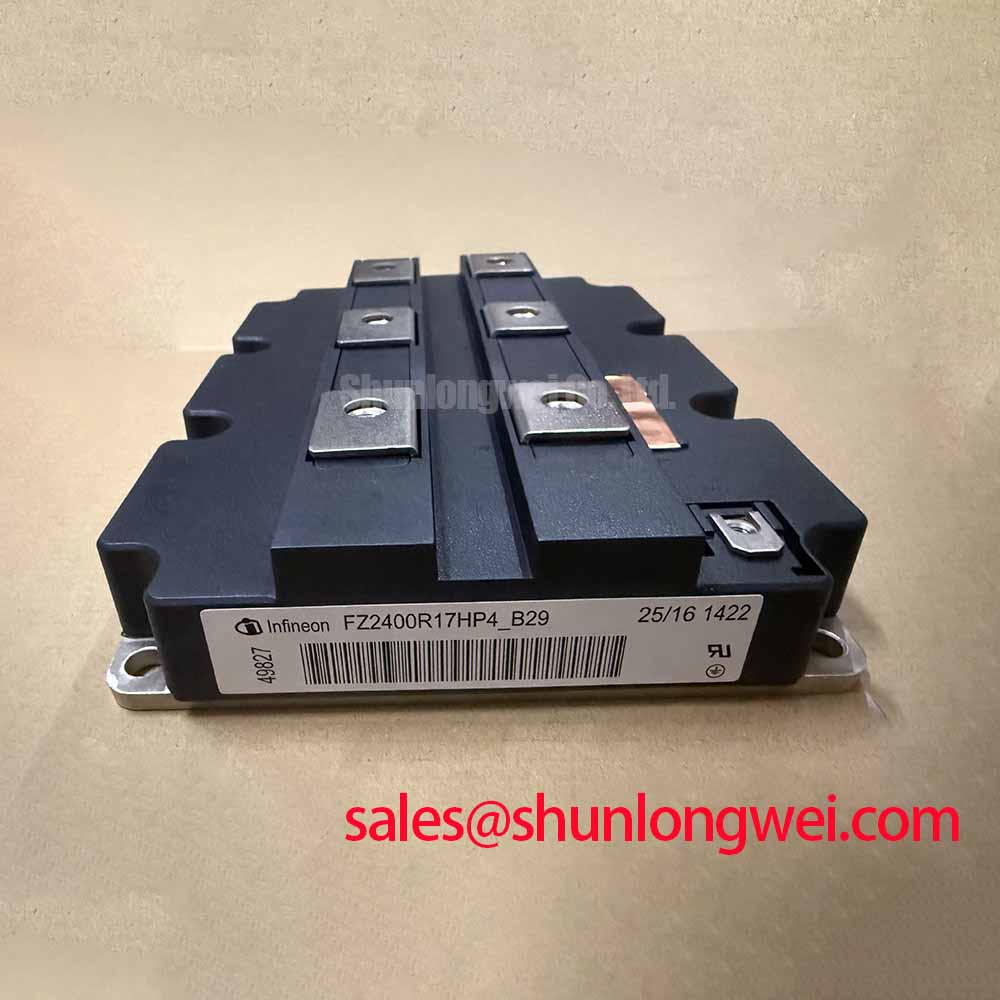Content last revised on November 12, 2025
Infineon FZ2400R17HP4_B2 | High-Power 1700V IGBT for Demanding Industrial Drives
The Infineon FZ2400R17HP4_B2 is an industry-defining high-power IGBT module designed for applications where reliability, thermal performance, and raw power handling are non-negotiable. Engineered for the megawatt class, this module serves as the switching backbone for the most demanding power conversion systems, from renewable energy infrastructure to heavy industrial machinery.
Product Highlights at a Glance
- Exceptional Current Rating: A nominal current of 2400A at 1700V provides massive power handling capability in a single device.
- Proven IGBT4 Technology: Employs Infineon's workhorse High Power (HP) IGBT4 chip, delivering a highly optimized balance between low conduction losses (VCE(sat)) and switching losses.
- Robust High-Voltage Housing: The IHV-B package is specifically designed for high-voltage isolation, mechanical stability, and superior thermal management.
- High Reliability: Built for applications with long service life requirements, offering excellent power and thermal cycling capabilities.
Key Parameter Overview
For engineers requiring quick-reference data, the following table summarizes the core electrical and thermal characteristics. For a complete dataset, you can download the official FZ2400R17HP4_B2 datasheet.
| Parameter | Value |
|---|---|
| Collector-Emitter Voltage (VCES) | 1700 V |
| Continuous Collector Current (IC nom) | 2400 A |
| Collector-Emitter Saturation Voltage (VCEsat, typ. at IC nom) | 2.15 V |
| Max. Junction Temperature (Tvj op) | 150 °C |
| Thermal Resistance, Junction-to-Case (RthJC per IGBT) | 8 K/kW |
| Package | IHV-B |
Technical Deep Dive: Engineering Excellence
The performance of the Infineon FZ2400R17HP4_B2 is rooted in two key design choices: its silicon technology and its packaging.
- Optimized IGBT4 High Power (HP) Silicon: This module utilizes Infineon's TrenchStop™ IGBT4 technology. Unlike newer generations that may prioritize ultra-low conduction losses for low-frequency applications, IGBT4 provides a superior trade-off for systems operating in the medium frequency range (e.g., 1-10 kHz). It keeps switching losses manageable without excessively increasing the VCE(sat), resulting in higher overall system efficiency in many high-power drive applications.
- IHV-B High-Isolation Housing: At 1700V, packaging is as critical as the silicon itself. The IHV-B package provides extensive creepage and clearance distances, ensuring safe operation and long-term reliability against high-voltage breakdown. Its large copper baseplate offers a low thermal resistance path to the heatsink, and the robust screw terminals are engineered to handle thousands of amperes without degradation.
Application Scenarios & Value Proposition
The FZ2400R17HP4_B2 is not a general-purpose component; it excels in specific, high-stakes environments:
- Wind Turbine Converters: In multi-megawatt wind turbines, this module is a cornerstone of the grid-side inverter. Its high current rating allows for higher power output per inverter, while its robustness ensures the reliability needed for offshore or remote installations. The module's efficiency directly contributes to maximizing the energy delivered to the grid, as detailed in our guide to IGBTs in wind-to-grid conversion.
- Medium Voltage Drives (MVDs): For large industrial motors in mining, water treatment, or manufacturing, MVDs are essential. The 1700V rating of the FZ2400R17HP4_B2 enables simpler, more reliable multilevel inverter topologies, reducing the need for extensive series connection of lower-voltage devices.
- Large-Scale Solar Inverters: Central solar inverters that consolidate power from vast solar fields rely on modules with high power density and efficiency. The FZ2400R17HP4_B2 allows designers to build more compact, efficient, and cost-effective inverters for utility-scale solar farms.
Frequently Asked Questions (FAQ)
1. What are the key design considerations for paralleling multiple FZ2400R17HP4_B2 modules?
Paralleling these high-current modules requires careful engineering. Success hinges on three factors: ensuring a perfectly symmetrical low-inductance busbar design to equalize current paths, using individual gate resistors for each module to prevent oscillations, and leveraging the positive temperature coefficient of VCEsat on the IGBT4 chip, which naturally helps balance current sharing under load. A poorly designed layout can lead to catastrophic failure. For more details, review our guide on preventing common IGBT failure modes.
2. How does the IGBT4 in this module compare to newer technologies like Infineon TRENCHSTOP™ IGBT7?
IGBT7 offers a significantly lower forward voltage drop, which is a major advantage in reducing conduction losses. However, the IGBT4 technology within the FZ2400R17HP4_B2 remains a formidable and often preferred choice for many high-power drive applications. It is a mature, field-proven technology known for its extreme ruggedness and well-balanced performance at the typical switching frequencies of these systems. For applications where cost-effectiveness and proven reliability are paramount, the FZ2400R17HP4_B2 represents an optimal engineering choice.
For help selecting the right high-power IGBT module for your design, please contact our technical team for expert consultation.










